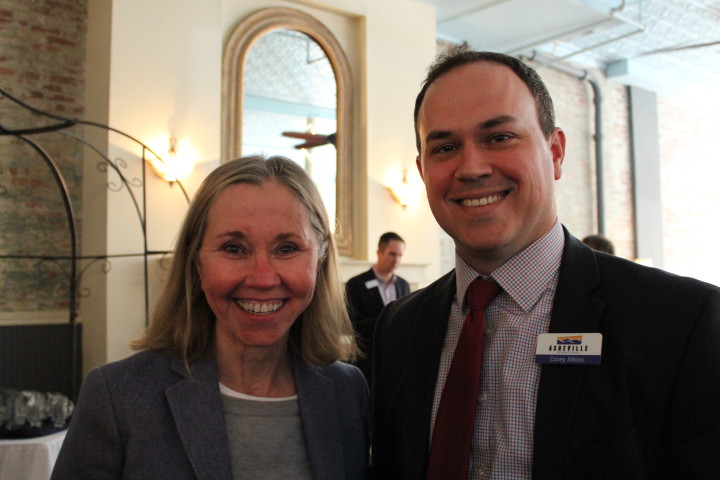Asheville, N.C. — Asheville’s economy has plenty to celebrate, according to economic futurist and consultant Ted Abernathy. In remarks on Oct. 19 to the Asheville Area Chamber of Commerce’s 18th annual Metro Economy Outlook, Abernathy told the crowd of around 200 that a shift to urban centers is a key economic trend.
With half the U.S. population now living in just 142 counties, Abernathy said, “We are urbanizing. Great news for you guys — you are on the winners’ side of this.” And unlike many other moderate-sized metros, Asheville’s growth compares positively to that of larger cities.

To demonstrate the vibrancy of Asheville’s economy, Abernathy reflected on his experience coming into town. “I went out last night, a Wednesday night at 9 o’clock in Asheville, and it was absolutely packed, every restaurant,” he said. On Thursday morning, he continued, he went to the coffee shop across the street from his hotel. “By 7:10 there wasn’t an empty seat in the coffee shop.”
Asheville led all North Carolina metro areas in earnings growth over the past five years. While he understands that wages are a concern in Asheville, “when you look at raw data, compared to everybody else, you’ve had a pretty good run recently,” Abernathy said.
Responding to concerns about the high cost of living in the Asheville area, Abernathy commented, “You hear that everywhere, in every successful place all across the country. If you are really successful and lots of people like you, you’re desirable, then your house prices are going to go up.”
“Your jobs are expanding, your employment’s expanding and, very important, your labor force is also continuing to expand,” Abernathy said. On the other hand, he continued, the labor force is shrinking in some counties just to the east of the Asheville area. “As a regional center, these numbers being weak, is not as good a forecast for you guys,” he said.
For companies seeking a location, Abernathy said, leading considerations include the availability of skilled labor, highway access and the cost of doing business. “What is scary, for places like Asheville is, available land and available buildings have moved into the top three. You’re challenged with sites for building here because of your geography,” he warned.
Reflecting on the macroeconomic forces that largely drive local economies, Abernathy said, “We’re at the long end of an expansion. I would be surprised if 2018 didn’t look a lot like 2017. Somewhere there’s a cycle change. My best guess is 2019.”
For Asheville, things look “pretty good,” Abernathy said. He cited a decrease in the personal savings rate over the last three years as a cause for concern for the economy overall, saying, “It’s not sustainable.”
Abernathy summed up his forecast for the future with a few conceptual predictions:
- Population growth will slow, diversify and concentrate in fewer places.
- Technology will continue to change every industry, with an ever-increasing focus on offerings that are faster, smaller, cheaper, more personalized and better integrated with mobile technologies.
- People will need more skills, but education will morph due to technology, with some education being provided in new settings.
- The middle tier of every industry is under threat.
- Business real estate use is changing, with shorter terms and higher densities.
- Competition is becoming more intense, resulting in winners and losers.
The Asheville Chamber and the Economic Development Corporation of Asheville-Buncombe County provided attendees with a companion report on the regional economy in 2016. The report compiled data on six Western North Carolina counties: Buncombe, Haywood, Henderson, Jackson, Madison and Transylvania.
The region’s population increased by 5.3 percent over the last five years and is projected to increase by 4.1 percent by 2021. Jobs increased by 10.9 percent from 2011 to 2016, outpacing the national growth rate by 2.1 percent.
According to the report, the area’s top three industries in 2016 included restaurants, education and hospitals.







Very good photos and captions which, fortunately, don’t include the increasingly popular and totally unnecessary word “pictured.”
What could be more obvious?